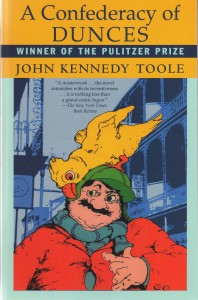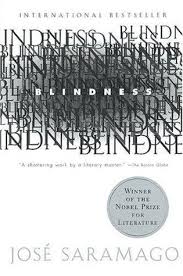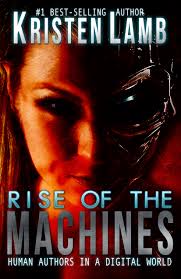 I realize now that these writing process notes are upside down. A blog is a stack of articles – last in, first out (LIFO, we used to say in another life; as opposed to FIFO, which is a queue).
I realize now that these writing process notes are upside down. A blog is a stack of articles – last in, first out (LIFO, we used to say in another life; as opposed to FIFO, which is a queue).
So the earliest notes on my current writing project are somewhere down in the list of posts, which readers of this one probably haven’t seen. That means I can’t depend on context to illuminate what I’m talking about.
Chapters in a book may be like that. I tacitly assume that a reader will understand the current chapter in the context of the ones before it, but I wonder if that’s true. I usually read two or three books at once, alternating among them, and it takes me a couple of weeks, at least, to finish one. Short-term memory being what it is, I need strong writing to remind me who’s what. I doubt if most readers read a book straight through in one or two sittings (unless it’s one of those mythical “un-put-downable” ones that the New York Times Book Review advertises).
I’ve been reading Dickens’ Bleak House for weeks. The thing’s a monster – must be 600 pages in print (I’m reading it on Kindle). I only read a couple of chapters a day, and that’s not every day. By now, I’m “82%” into it (no page numbers in Kindle), and I remember hardly anything of the first few chapters. But Dickens’ wrote Bleak House like a blog. It was serialized in a newspaper, weekly, I think, over 18 months, so each chapter does have a certain integrity. Since the plotline started to pick up after the 50% mark, I’ve had better contextual memory for characters and events. Maybe that’s the true value of plot – short term memory aid.
My current project, working title “Chocotle,” has four chapters now (hold your applause). I’m trying to focus on characters, not on plot, which is a big change for me, with the result that, at the end of each chapter, there is no springboard of causality to launch me into the next. No hook, no cliffhanger. Chapters just end when the characters are done saying and doing what they meant to say and do. God, I worry about that.

I have a screen that says, “Chapter 5,” and that’s all. It’s daunting. I look at it and I wait for something to come to me. Anything! Please! Okay, a clown jumps out from behind a floor lamp and puts Mozart on the stereo. There’s an opening line. I can’t use that. Anything is the same as nothing if there are no constraints on anything. I need constraints.
So I created a startup template:
Outline for Chapter N
- Title TBD
- Begun: date
- SAVE AS !!!
Goal
Characters
Location(s)
Scenes
Notes
I write my goal for the chapter as if I were writing specifications for some other writer who will do the actual work. I don’t give a thought as to how I could accomplish the goal. That will be somebody else’s problem (namely, me, later on).
Goal for Chapter 5:
In this chapter, I need to show Scott’s decline in performance at work, and in happiness at home, as his worldview morphs from committed consumerism (him on the supply side) to something more genuine and interpersonal. The change is becoming problematic for his career and even his home life. People don’t like other people to change. They won’t allow it. Snap out of it, Scott! He doesn’t flame out yet. These are the early rumblings. The reader may or may not associate his changes with his continued obsession with chocotle.
Once I have an approximation of the goal, I sometimes start to visualize scenes or snippets of dialog in that context, and if so, I keep on writing, no matter how chaotic the result is. Anything is always better than nothing. Something can be edited. Nothing cannot be. If I ramble on, I can cut and paste those thoughts later, moving them down to the “Notes” section, but I never interrupt the rambling if it starts rolling. Rambling is gold. Ramblin’ Gold. Wasn’t that a Nat King Cole song?
Then I list the characters I expect to be in the chapter. In this case, Scott, obviously. And probably his boss, Mason Lenox, because I see some kind of a scene at his office, where Mason talks to Scott about his erratic performance lately. Scott is surprised. I’m not erratic, what are you talking about. Mason says, Stanton said you argued with him. You know we never argue with a client. I didn’t argue! I was suggesting xyz. You can’t believe how lame their ideas were. He was upset. He called you and whined?
Quite often, when I list a character who will appear with Scott, some shapes of a scene coalesce, and, as above, maybe some lines of dialog appear out of nowhere, which are, of course, horrible, but that doesn’t matter. I write them anyway, then snip them all and move them down to the “Scenes” heading, and voila, I have a germ of a scene, and all is not lost.
At home, Scott will talk to his wife, Allie about his troubles at work, so I list her as a character. But what if he wasn’t home? I’ve been spending too much time there. He could call home and he talks to his son, Dylan. Where’s your mother? Out. Some kind of meeting. With Nora? I don’t know. At this time of night? That’s what she said. Yadda, yadda.
I’m starting to visualize a situation where Allie is cheating on Scott, and this is the first clue, and if I wrote it well, the reader might suspect something was going on even if Scott doesn’t.
List Dylan as a character.
 The same sort of process goes on when I list the locations where things are going to happen. One location is at Scott’s work. One is at home. But wait, if he calls home, he’s not at home, so where is he? Maybe he went to the beach house. It’s October, it would be all shut down, cold and dark and stormy. Good mood. He calls from there. Why would he go there? What’s up with him? Hmm. I’m visualizing a situation and another scene. And I could free-associate on that and snip it later to its proper place.
The same sort of process goes on when I list the locations where things are going to happen. One location is at Scott’s work. One is at home. But wait, if he calls home, he’s not at home, so where is he? Maybe he went to the beach house. It’s October, it would be all shut down, cold and dark and stormy. Good mood. He calls from there. Why would he go there? What’s up with him? Hmm. I’m visualizing a situation and another scene. And I could free-associate on that and snip it later to its proper place.
Then I move up and down the outline, which really isn’t an outline, just a container for ideas, some of which may never happen. I add ideas to the categories, if any occur to me, until something looks like something. Above all, I want to get out of the chapter having achieved its stated goal. I keep going back to that. What must I do to make that goal happen?
Still, even with infrastructure built, a sentence must be written on that blank page. What is that first sentence? Where does it come from? I don’t know, and I don’t know. Where does blood come from when you prick your finger with a pin?













